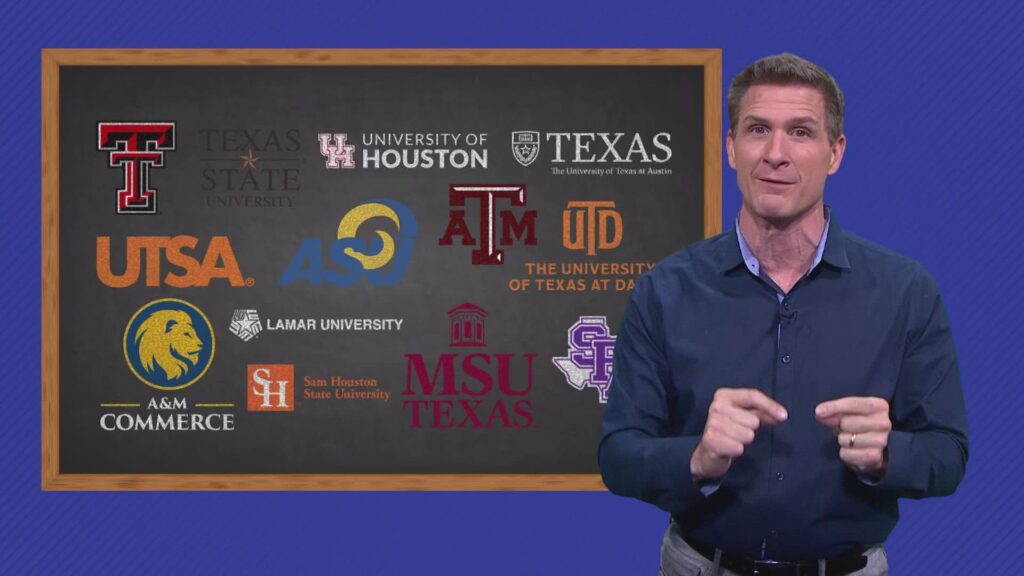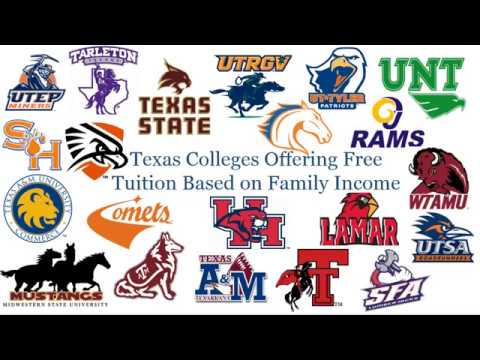Education in Texas poses an intriguing question: is it truly free? In a society where access to knowledge is essential, understanding the cost and accessibility of education becomes crucial. This article aims to shed light on the topic by examining the education system in Texas and exploring the various factors that contribute to the perceived notion of “free” education. By delving into the intricacies of tuition fees, scholarships, and government policies, you will gain a comprehensive understanding of whether education is truly free in the Lone Star State.

This image is property of media.wfaa.com.
Overview of Education in Texas
Texas has a comprehensive education system that encompasses public education, private schools, and charter schools. This article will provide an in-depth look at the different aspects of education in Texas, from primary and secondary education to higher education. We will also explore the funding mechanisms and costs associated with education in the state, as well as options for free education and the challenges that can arise in accessing it.
Public Education System
Public education in Texas is primarily provided by the state’s public school system, which is overseen by the Texas Education Agency (TEA). This system comprises both primary and secondary education, as well as higher education institutions such as community colleges and public universities.
Private Schools
In addition to public schools, Texas has a significant number of private schools that offer an alternative to public education. Private schools in Texas are independent of the public school system and rely on tuition and private funding for operation. They often offer unique educational approaches and can provide more individualized attention to students.
Charter Schools
Charter schools are another form of education in Texas. These schools are publicly funded but operate independently of traditional public schools. They have the ability to create their own educational programs and curricula, providing families with additional options outside of the traditional public school system. Charter schools often have specific focuses, such as STEM education or performing arts, and provide an alternative to both public and private schools.

This image is property of thecollegepod.com.
Public Education in Texas
Primary and Secondary Education
Public primary and secondary education in Texas is provided to all eligible students free of charge. Students attend public schools within their assigned school district, of which there are numerous across the state. These school districts are responsible for hiring teachers, developing curricula, and providing necessary education resources.
Higher Education
Texas boasts a wide array of higher education institutions, including community colleges and public universities. Community colleges offer associate degrees and technical training programs, serving as a stepping stone for students seeking to transfer to four-year universities or enter the workforce directly. Public universities, on the other hand, offer bachelor’s, master’s, and doctoral degrees across various disciplines.
Funding for Public Education
The Texas public education system is funded through a combination of state and local funding. The state government allocates funds to school districts based on various factors, including student enrollment and needs. Local funding, primarily derived from property taxes, is also significant and allows individual school districts to supplement state funding. However, this funding mechanism has come under scrutiny for its potential to create inequities between districts and exacerbate educational inequalities.
Primary and Secondary Education
Public School Districts
Texas is home to more than 1,000 public school districts. These districts are responsible for operating and overseeing public schools within their jurisdiction. Each district is governed by a locally elected school board that sets policies, approves budgets, and hires superintendents. The size and resources of each district can vary considerably, leading to differences in facilities, teacher-student ratios, and available extracurricular programs.
Compulsory Education
Education in Texas is compulsory for children between the ages of 6 and 18. It is the responsibility of parents or legal guardians to ensure that their children are enrolled in an approved educational program, whether it be a public school, private school, or homeschooling. Failure to comply with compulsory education laws can result in legal consequences for parents.
School Funding
Funding for primary and secondary education in Texas primarily comes from state and local sources. The state government allocates funds to school districts based on factors such as student enrollment and the presence of economically disadvantaged students. Local funding is largely derived from property taxes, with wealthier districts often having more resources due to higher property values. This funding structure has been criticized for creating disparities between districts, with some schools having access to more resources and opportunities than others.

This image is property of i.ytimg.com.
Higher Education
Community Colleges
Texas has a robust community college system that provides affordable and accessible higher education options. Community colleges offer associate degrees and technical training programs that enable students to enter the workforce or transfer to four-year universities. These institutions serve as a bridge between high school and university, providing a more affordable option for students who may not be ready or able to attend a traditional university immediately.
Public Universities
Texas boasts a diverse range of public universities, many of which are nationally recognized for their academic programs and research contributions. These universities offer bachelor’s, master’s, and doctoral degrees across a wide array of disciplines. Public universities in Texas are funded through a combination of state funding, tuition revenues, and private donations.
Financial Aid and Scholarships
In order to make higher education more accessible, Texas offers various forms of financial aid and scholarships to eligible students. The state provides grants and loans to help cover tuition costs, and universities often have their own scholarship programs based on merit or financial need. Additionally, students can apply for federal financial aid, such as Pell Grants or work-study programs, to further offset the costs of higher education.
Private Schools in Texas
Types of Private Schools
Private schools in Texas offer an alternative to public education and cater to a variety of educational philosophies and religious affiliations. These schools operate independently and charge tuition fees for attendance. They often have smaller class sizes, specialized curricula, and extracurricular offerings. Private schools may include religious schools, secular schools, and specialized schools that focus on specific skills or talents.
Tuition and Fees
The cost of tuition and fees at private schools in Texas can vary considerably depending on the school and its location. Tuition fees can range from a few thousand dollars to tens of thousands of dollars per year. Additionally, private schools may charge additional fees for extracurricular activities, textbooks, and uniforms. It is important for families considering private education to carefully evaluate the costs associated with attending these schools.
Accreditation
Accreditation ensures that private schools in Texas meet certain standards of quality and educational rigor. Some private schools seek accreditation from recognized accrediting agencies, while others may choose not to pursue accreditation. Accreditation can serve as an important indicator of a school’s quality and can impact a student’s ability to transfer credits or pursue higher education opportunities.
This image is property of i.insider.com.
Charter Schools in Texas
What are Charter Schools?
Charter schools are publicly funded schools that operate independently from traditional public schools. They are granted a charter or contract by either the state or a local education agency, which outlines their autonomy and accountability requirements. Charter schools have the flexibility to create their own educational approach and curriculum, often focusing on specific themes or educational philosophies. They are open to all students and typically hold lotteries if there are more applicants than available spots.
Funding and Accountability
Charter schools in Texas receive public funding based on student enrollment, similar to traditional public schools. However, they often face unique challenges in securing adequate funding, as they do not have access to the same local tax revenue sources as traditional public schools. Additionally, charter schools are held accountable for meeting academic performance standards and must adhere to the terms outlined in their charters.
Enrollment Process
Enrolling in a charter school in Texas typically involves an application or lottery process. If a charter school receives more applications than available spots, they may conduct a lottery to determine which students are granted admission. Charter schools are required by law to accept all students, and admission cannot be based on academic or athletic abilities.
Costs Associated with Education in Texas
Tuition and Fees
While education is largely free in Texas, there are certain costs associated with attending school. Private schools charge tuition fees, and some public schools may require fees for certain extracurricular activities or resources. Higher education institutions also have tuition fees, which can vary depending on the type of institution and the student’s residency status.
Additional Expenses
In addition to tuition fees, students and their families may incur additional expenses such as textbooks, school supplies, transportation, and extra-curricular activities. These costs can differ significantly depending on the grade level, school, and individual needs of the student.
Financial Assistance
Texas offers various forms of financial assistance to help alleviate the costs associated with education. Public and private universities often provide financial aid packages based on merit or demonstrated financial need. In addition, the state provides grants and loans to eligible students to help cover tuition costs. Students and families can also explore federal financial aid options, scholarships, or work-study programs.

This image is property of ewscripps.brightspotcdn.com.
Options for Free Education
Public Schooling
Public schools in Texas provide free education to eligible students from primary through secondary education. These schools are funded by the state and local communities and offer a wide array of academic programs, extracurricular activities, and support services. Public schools are open to all students and aim to provide equal educational opportunities for everyone.
Financial Aid and Scholarships
Financial aid and scholarships can help students access free education in Texas. The state offers grants and loans to eligible students based on financial need, academic achievement, and other factors. Additionally, universities and private organizations provide scholarships to students who demonstrate exceptional academic or athletic abilities, or who meet specific criteria set by the scholarship provider.
Programs for Low-Income Families
To ensure equal access to education, Texas offers programs to support low-income families. The Texas Department of Human Services provides assistance for child care costs, allowing parents to work or attend school. Additionally, the Texas Education Agency administers programs such as free or reduced-price meals and summer meal programs, which help ensure that students from low-income families receive proper nutrition and support.
Challenges to Accessing Free Education
Affordability and Accessibility
While education in Texas is generally free, some families may still face challenges in accessing education due to financial constraints. For example, families may struggle with the costs of transportation, school supplies, or extracurricular activities, making it difficult for their children to fully participate in educational opportunities. Additionally, families in rural areas may have limited access to educational resources and may need to travel long distances to attend school.
Inequality in Education
One of the key challenges in accessing free education in Texas is the persistence of educational inequalities. Due to the funding mechanisms and disparities between districts, some schools may have more resources, qualified teachers, and extracurricular offerings than others. This can result in unequal educational opportunities for students, particularly those from disadvantaged backgrounds. Efforts are being made to address these disparities and provide equal access to quality education for all students in Texas.
Educational Resources
Access to educational resources can be a challenge for some students in Texas. While public schools strive to provide necessary materials and resources, budget constraints may limit the availability of up-to-date textbooks, technology, and other essential tools for learning. Additionally, schools in low-income areas may face greater challenges in providing students with the resources they need to succeed academically.
Conclusion
Education in Texas is a multifaceted system that encompasses public schools, private schools, and charter schools. While public education is largely free in the state, there are associated costs and challenges that individuals and families may face. However, options for free education exist through public schooling, financial aid, scholarships, and programs for low-income families. It is important to recognize and address the challenges of affordability, accessibility, and inequality in education to ensure that all students in Texas have equal opportunities for success.
